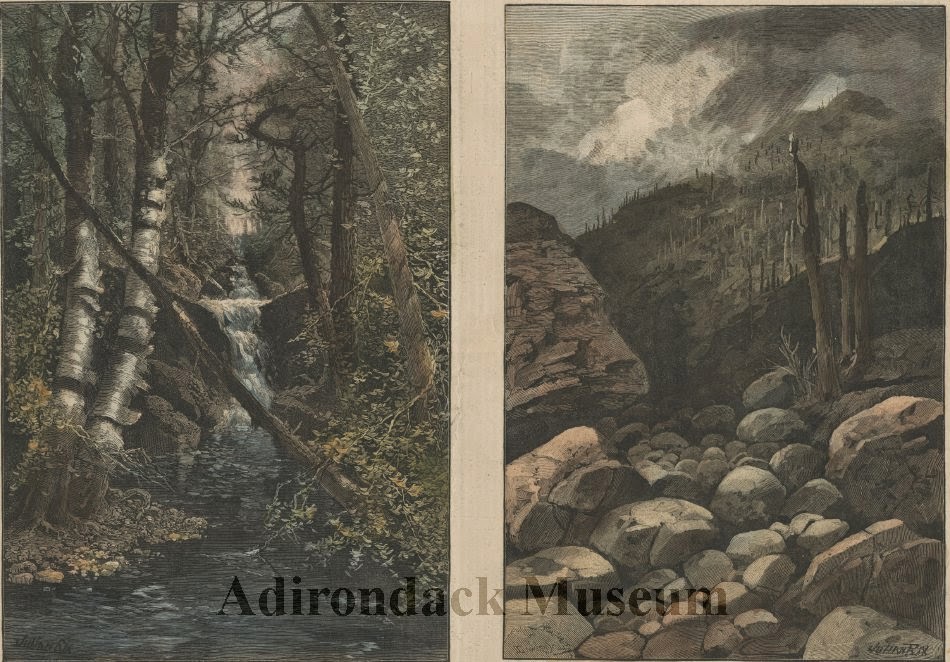At the beginning of Scheinder's "Forever Wild" chapter, Schneider mentions two engravings depicting the Adirondacks that were published in the January 24, 1885 issue of Harper's magazine. There are two prints; One entitled, "A Feeder of the Hudson, as it was," and the other, "A Feeder of the Hudson, as it is." I did a little digging and found the prints that Schneider was referring to.
On the left is the first image, "A Feeder of the Hudson, as it was" and on the right is "A feeder of the Hudson, as it is." In these prints, by Julian Rix, we see two completely different landscapes. The first one shows a beautiful and lush landscape with moss covered rocks, a flowing waterfall, and towering trees. In the second image, we see a barren landscape with tree stumps, and even a smoldering one that appears to have been burned just moments before. These prints really capture the drastic change that occurred in the 19th century in the Adirondacks as logging became more and more prevalent.
I was very surprised when Schneider asserted that no one was concerned with preserving the "wilderness for its own sake," (220) but more so for more utilitarian and commercial purposes. Verplanck Colvin highlighted this commercial concern in his legislative report that "The Adirondack Wilderness contains the springs in which are the sources of our principal rivers, and the feeders of our canals. Each summer the water supply [...] has lessened, and commerce has suffered," (222). Even once the Forest Preserve was enacted, Schneider points out that there was no legislative protection for the trees of the Adirondacks. But Schneider isn't surprised as he reiterates that the "neither the Forest Preserve nor the Adirondack Park was created out of a desire to preserve wilderness in any prehumanized sense, " (224).
I had always assumed that the Adirondack Park and the Forest Preserve were made first and foremost out of a concern for the actual inhabitants and ecology of the area. Then again, the Adirondacks have a long history of economically driven movements. While it is difficult to understand this mindset from a contemporary framework, these legislations were beneficial to the Adirondacks, no matter what the original intent was in the 19th century.

I had the same reaction when reading about the park's creation. In my mind, the Adirondack park represents a preservationist perspective. To find out that the driving force behind its creation was economics rather than an effort to preserve wilderness for its own sake was kind of tough to swallow! After reading Schneider, I realized that there's no debate on the matter: if the destruction of the park had presented no threat to new york city's water supply, or to the logging industries, the park would not be here today. I don't think it's cynical to admit that, even today, economics are still the driving force behind many political decisions made about the environment.
ReplyDelete